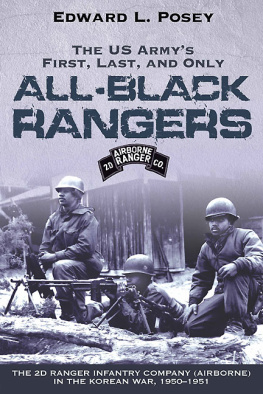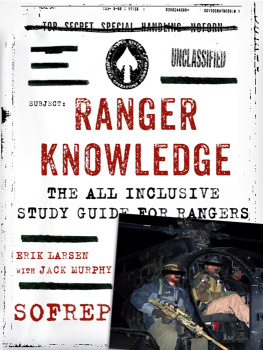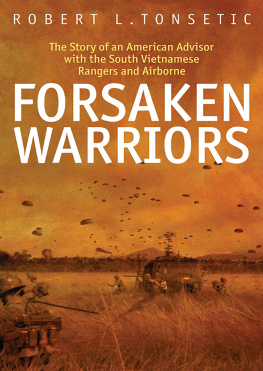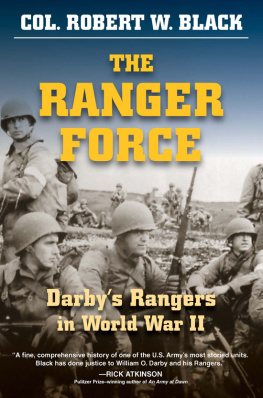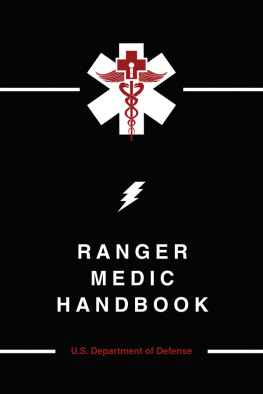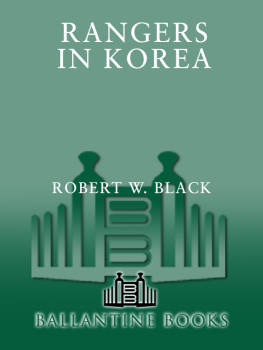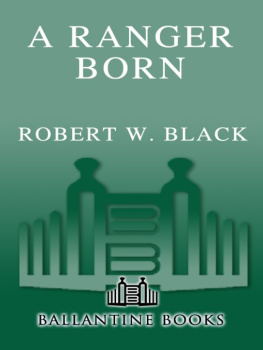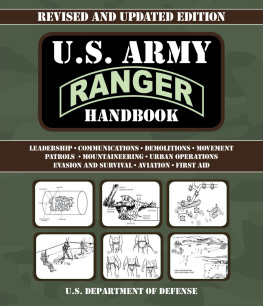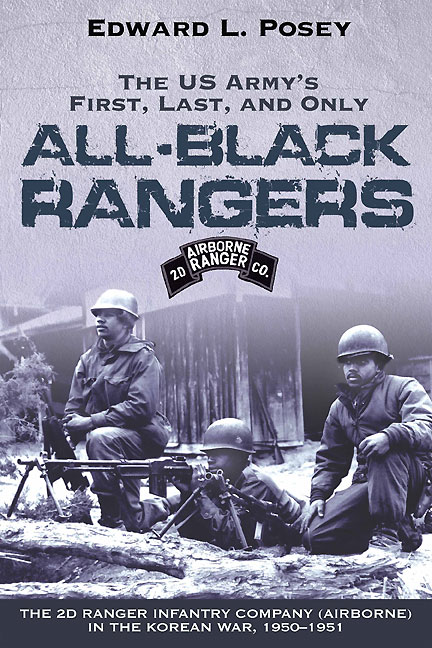Advance Praise
The passionate description of bravery, patriotism, and pride gives the reader insight into the men who changed the armed services forever. I found myself wanting to cheer for them, cry with them, and beamed with pride in all they were able to accomplish.
Pamela Gentry, Washington Bureau Chief, BET News
This outstanding book stands as a shining example of what Americans are capable of accomplishing. This elite outfit of paratroopers fought both the Communists on the battlefield and racial prejudice and bigotry from their own government. As a founding member of the Congressional Black Caucus, I think this book will educate Americas children, young and old, about what others have sacrificed on their behalf.
Congressman John Conyers, Jr., Michigan
This book has it all: drama and daring, bravery and bigotry, combat and courage. These remarkable men made the first airborne assault in Ranger history on March 23, 1951 and ended their service with an outstanding combat record that is now, finally, one for the history books.
Tim and Daphne Reid, Producers, New Millennium Studios
As a combat veteran of the Korean War, an author, actor, and Above the Call: Beyond the Duty style US citizen of African American descent, I found Edward Poseys The US Armys First, Last, and Only All-Black Rangers an outstanding contribution to both our nations history, and the history of our country during wartime. I heartily recommend this eye-opening and informative depiction of an incredibly relevant page in American history.
James McEachin, Silver Star, Purple Heart veteran, author, actor, director, and producer
There is a growing interest in the role of the African American soldier in our history, from the time of the Revolution to Iraq. The US Armys First, Last, and Only All-Black Rangers adds a fascinating personal note to this ongoing epic. Poseys story is important because it says so much about our history. Its destined to become an essential part of our understanding of the role black citizens have played in defending and defining our country.
Charlie Maday, Senior Vice President, Military History Channel
Formed as part of an army that clung to racial segregation, despite a presidential directive to the contrary, the Buffalo Rangers helped make racial integration a reality. This is their story.
Bernard C. Nalty, author of Strength for the Fight: History of Black Americans in the Military
Master Sergeant Ed Poseys story is a riveting account of the misuse of brave men, who made up the Armys first, last, and only all-black ranger company in what has come to be known as the Forgotten War, the US Army in Korea 19501953. While the local combatant commanders on the ground were clearly willing to use the 2nd Ranger Infantry Company (Airborne) in realistic tactical formations, senior officers at corps and higher were still guided by their own misguided prejudices grounded in WWI and WWII concepts about the black soldiers inability to be competent leaders or fighting infantrymenalmost three years following President Trumans Executive Order 9981 to ensure equality of treatment and opportunity. Poseys firsthand experience, accompanied by the recollections of his peers, paints a vivid mosaic of life at the most basic level of the airborne grunt. Its a story that made me reflect on my experience as a small unit leader in the early stages of the Korean War.
Julius W. Becton, Jr., Lieutenant General USA (Ret.), author of Becton: Autobiography of a Soldier and Public Servant
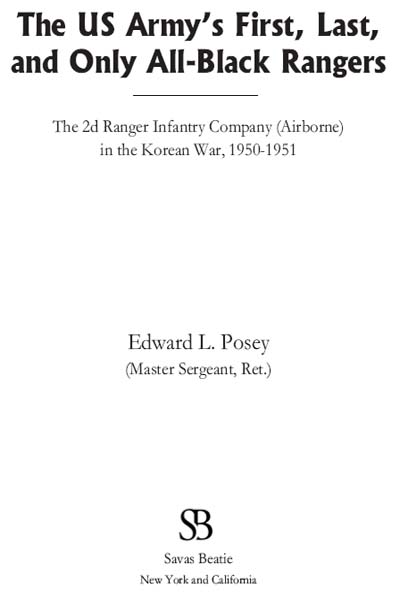
2009 by Edward L. Posey
All rights reserved. No part of this publication may be reproduced, stored in a retrieval system, or transmitted, in any form or by any means, electronic, mechanical, photocopying, recording, or otherwise, without the prior written permission of the publisher.
Cataloging-in-Publication Data is available from the Library of Congress.
ISBN 13: 978-1-932714-45-6
eISBN: 978-1-61121-036-1
05 04 03 02 01 5 4 3 2 1
First edition, first printing

Published by
Savas Beatie LLC
521 Fifth Avenue, Suite 3400
New York, NY 10175
Phone: 610-853-9131
Editorial Offices:
Savas Beatie LLC
P.O. Box 4527
El Dorado Hills, CA 95762
Phone: 916-941-6896
(E-mail) editorial@savasbeatie.com
Savas Beatie titles are available at special discounts for bulk purchases in the United States by corporations, institutions, and other organizations. For more details, please contact Special Sales, P.O. Box 4527, El Dorado Hills, CA 95762, or you may e-mail us at sales@savasbeatie.com, or visit our website at www.savasbeatie.com for additional information.
To all of the Buffalo Rangers
of the 2d Ranger Infantry Company (Airborne)
who served with us in Korea.
This book would not have been possible without the dedicated vision of Major James C. Big Jim Queen, Sergeant First Class William Weathersbee, and the collaborative efforts of the surviving members of the 2d Ranger Infantry Company (Airborne). The result of their decades-long journey is this wonderful booktheir most important and final mission.
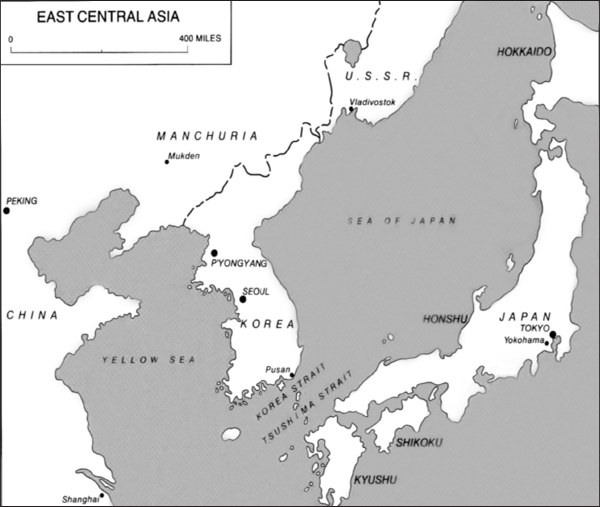
Maps
Hand-drawn maps prepared by Major James Queen for Munsan-Ni After-Action Report:
Photographs
Foreword
T his book covers the first eight months of the 2d Airborne Ranger Companys experiences during the Korean conflict. It complements the histories of the 3d and 4th Ranger Companies, which were both all-white, by telling the stories of an all-black unit.
There are marked similarities but some race-specific differences between the Ranger Companies, which makes this book significant to the history of African Americans in military service.
The US Armys First, Last, and Only All-Black Rangers: 2d Ranger Infantry Company (Airborne) in Korea 19501951 gives a general unit history of the 2d Airborne Ranger Companys combat experiences in Korea. It records an important chapter in the Korean War. It begins with the first year of the war and goes on to describe in great detail the test of American leadership, resources, training incompatibility, and inadequacies of the United States effort in Korea. It also examines the special problems posed to the fighting army during the months of stalemate in the summer of 1951. Like the stories of other Rangers who served in Korea, this book emphasizes the limitations imposed by terrain and weather on the fighting capabilities of the troops. For those in the profession of military history the operations of the 2d Ranger Company are described in careful detail, to provide a vivid description of the application of the principles of war.
This book is going to the printer more than fifty years after the end of the Korean War. It emphasizes the contributions of African Americans who served during the Korean era. It is important to study carefully such a recent and invaluable example of an American all-black Ranger company that performed superbly against many odds. I encourage military and civilian students and veterans alike to take advantage of this insightful journey into the lives of those African Americans who made great sacrifices when America was in need.

